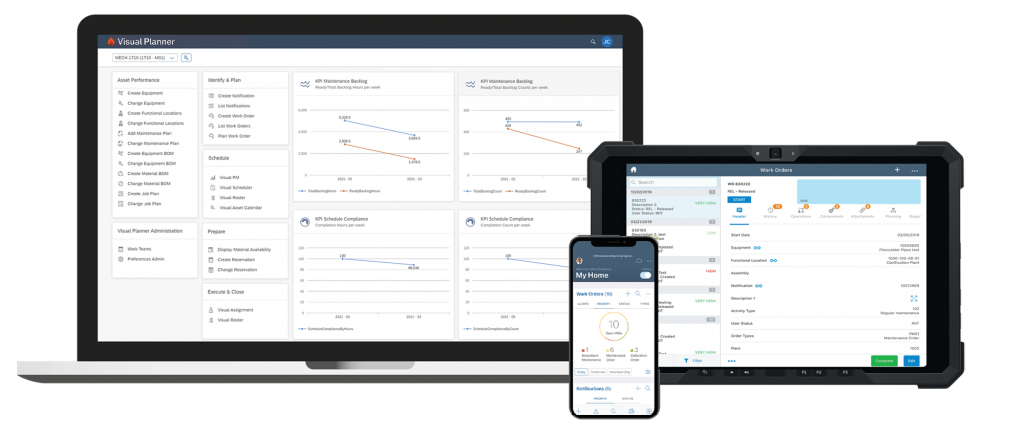To plan or not to plan maintenance work… that is the question.
There are many different beliefs and perspectives when it comes to planning and scheduling maintenance work.
Some may say that it is almost impossible for asset intensive organizations to plan, schedule and execute maintenance work without having to regularly deal with unplanned emergency work, equipment failures, and last-minute changes to the maintenance schedule.
Others will tell you that implementing a maintenance planning and scheduling process is costly and seldom profitable. But choosing reactive maintenance has its disadvantages. It is more expensive in the long run, there are more safety issues, it does not keep systems running in optimal condition and it is bad for backlog.
Lastly, there are facilities that think they already plan and schedule maintenance work. But in fact, very few have fully implemented these processes. They either plan and schedule work a day ahead or have a weekly wish list. The results are inefficiency, loss of productivity, increased overtime hours, and they still need to react to equipment breakage and failures.
The Steps to Reaching Maintenance Excellence
Implementing planning and scheduling best practices is hard work. But most importantly, if you want your transformation project to succeed, it’s all in the willingness of the organization’s work culture. Getting management on board is key, along with three conditions that will drive change: clarity, consensus and commitment. And every step of your plan should revolve around creating and maintaining these conditions.
To reach maintenance excellence, there are multiple steps that need to be followed. First, you must assess the current situation in your organization. Do you have a process in place? And if so, is this process working properly? Is it enabling you to reach your organization’s objectives and KPIs? Moreover, even with a process in place, are you still responding to emergency work, having to deal with equipment failures and putting the routine maintenance work aside, which inevitably increases your backlog?
To do a thorough evaluation, it is important that you hire asset reliability experts with extensive industry expertise to map out your existing maintenance planning and scheduling process, evaluating your process against maintenance best practices, and identifying the main gaps that need to be addressed.
They will also help you define the new process, set roles and responsibilities, and put your team in place.
Introducing the Work Week Management Process
Designed to ensure that the highest routine maintenance work priorities set by maintenance planner/schedulers and operations reliability coordinators are being completed on time on a weekly basis, the work week management process consists of a multi-week rolling schedule that provides clear direction for integrating emergency work and overcoming the multitude of day-to-day challenges that can occur, in order to closely adhere to the approved weekly schedule. It also promotes teamwork between maintenance and operations so they can work together to maximize equipment uptime and production output.
When in place, only then can you digitalize the multitude of maintenance work scheduling parameters using a powerful scheduling tool that is project-specific to help implement this process successfully and empower your organization to execute the maintenance work required to prevent asset failures in a timely manner.
Of course, the successful implementation of the process within your organization will come with the appropriate training and coaching you will provide to your staff, to do the work according to the plan.
Last but not least, putting in place measures that will sustain the plan is crucial: set performance metrics and reviews to assess how well the process is working and where the next improvements should take place.
With all this in hand, you are well set to finally see the results and the impacts this will have on your bottom line: backlog reduction, increased productivity, reduced overtime, as well as a significant ROI in just a few months.


